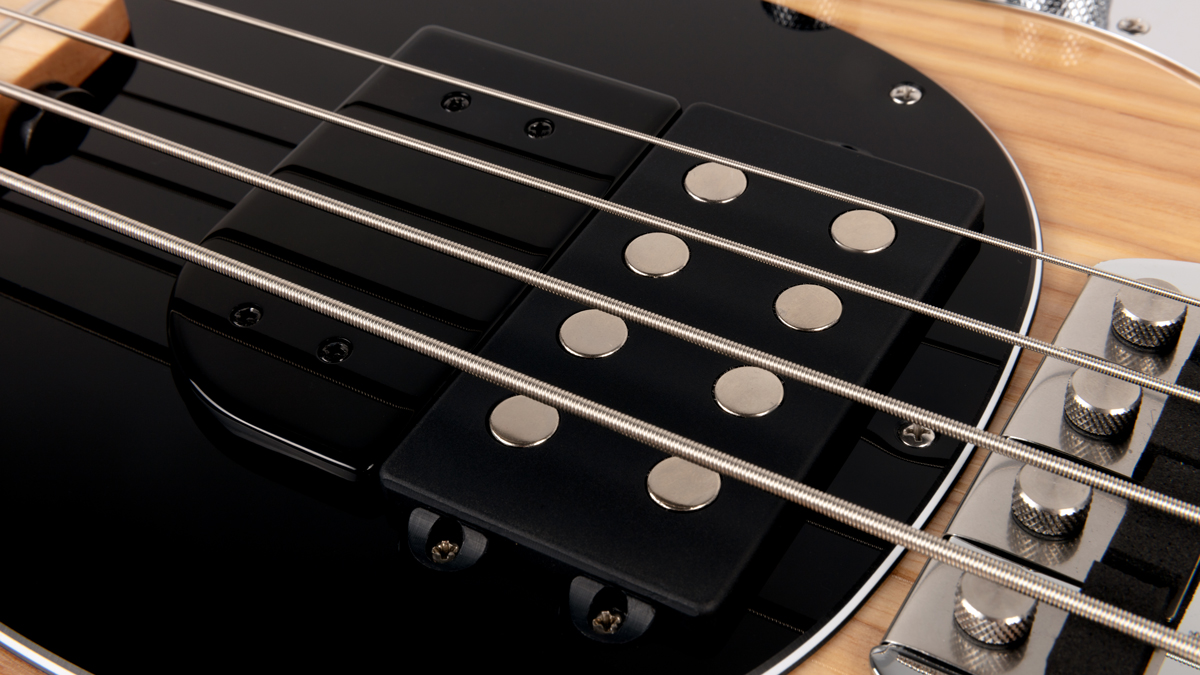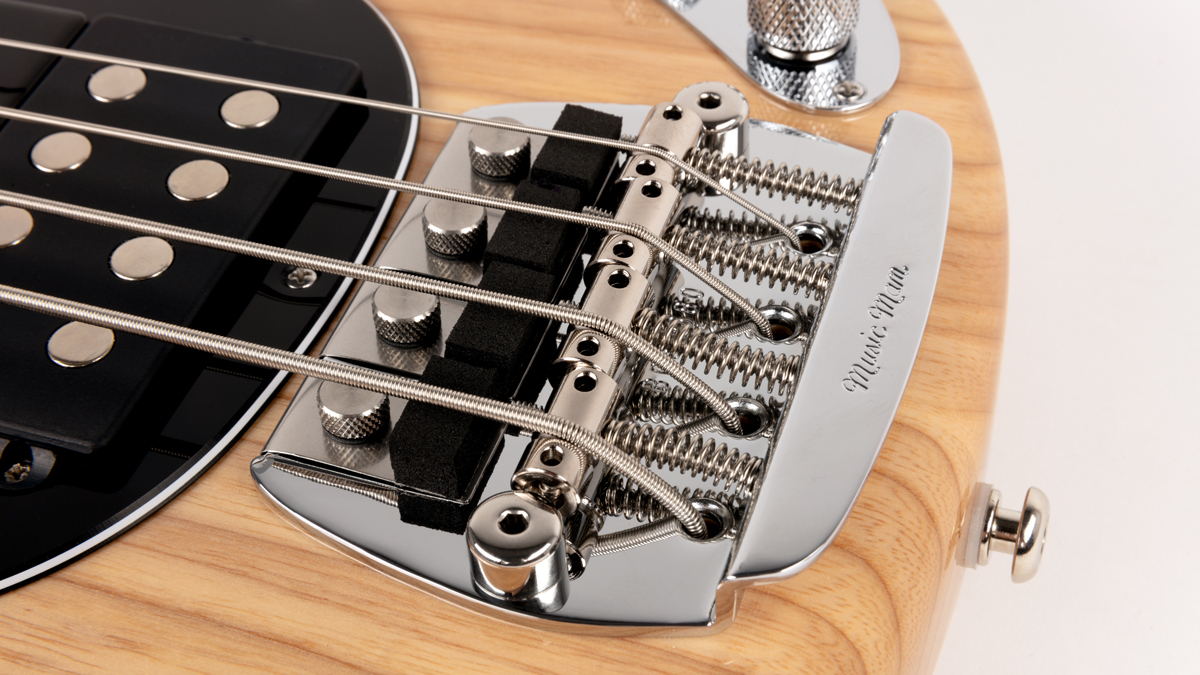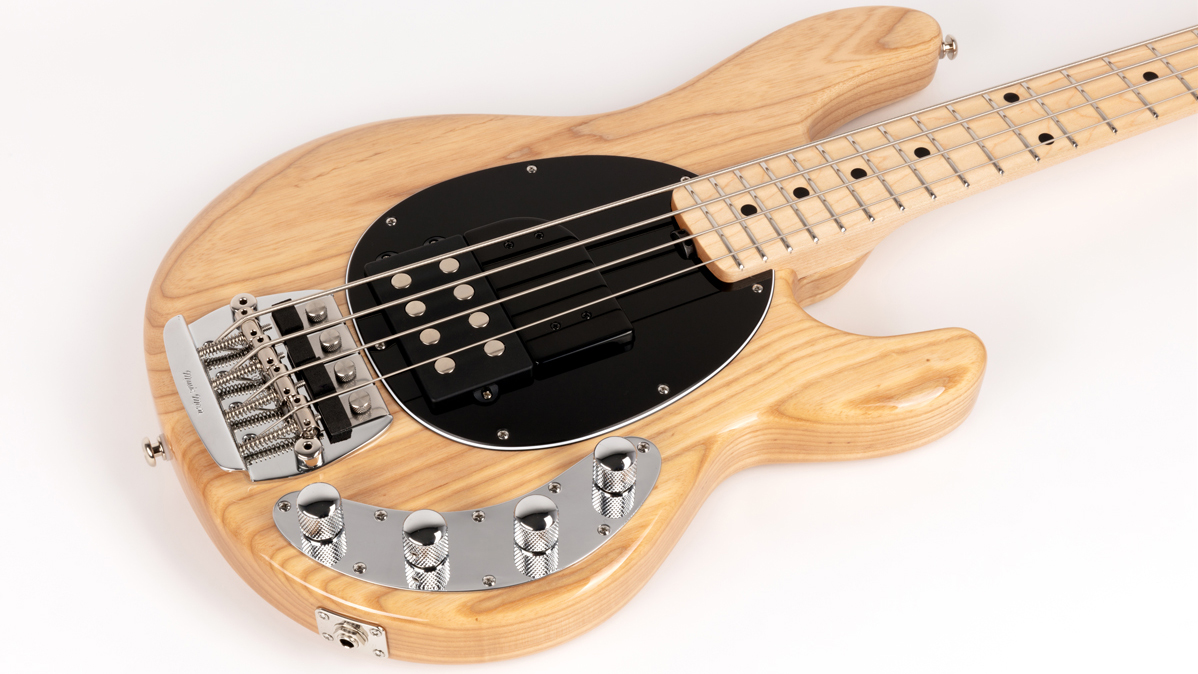Guitar World Verdict
Tim Commerford has spec’d a smartly designed bass with several ingenious tweaks, which make this ideal for any number of clean and distorted styles. Now we just need EBMM to make more!
Pros
- +
Huge sound.
- +
The string mutes and adjustable finger ramp are well-designed and effective.
- +
Great feel.
Cons
- -
There aren’t enough of them.
- -
And, as a result, they’re pricey.
You can trust Guitar World
For the past three years, Ernie Ball Music Man has been steadily introducing signature bass guitars for heroes of the low-end, including Vulfpeck’s Joe Dart, Dream Theater’s John Myung, MxPx’s Mike Herrera and AC/DC’s Cliff Williams.
Each one uses the basic template of an existing model with slight tweaks to personalise it to the player. So far, that has mostly meant streamlining electronics and controls.
Their latest collaboration with Tim Commerford follows the same blueprint except for the less-is-more concept. Instead, the Rage Against The Machine, Audioslave and Prophets of Rage bassist worked with the company to come up with four variants of the StingRay: a passive full-scale, an active full-scale, a passive short-scale, and an active short-scale.
The basses all have standard pickups and controls and have been streamlined only in production numbers: each version is limited to just 50 units worldwide. We got our hands on one of the active short-scale models to see if the little beast can muster the monstrous tones for which Commerford is known.

As with any short-scale, this bass feels small as soon as you take it out of the case, but its construction makes it feel solid as a rock. It’s crafted with an ash body in a natural finish with a black pickguard – a configuration Commerford latched onto by way of slap legend Louis Johnson – as well as a maple neck and fingerboard.
The neck has a gunstock oil and hand-rubbed special wax blend finish, leaving it silky smooth to the touch. The whole package weighs in at just over seven pounds, which I found to be light enough to sling around but heavy enough to feel substantial.
Aside from what we think of as a classic StingRay, there are two main features that are unique to Commerford’s new axe. First is the height-adjustable finger ramp, which sits snugly against the bass’s single neodymium humbucker. It offers an extra couple of inches of thumb real estate to find your sweet spot for plucking. Its height is set simply with four screws to line it up with your pickup. Conversely, you can lower it all the way to be flush with the pickguard.

The second new feature is the adjustable mute pads built into the bass’s bridge. First found on early StingRay models, the system gives each string its own foam pad that can be raised or lowered by a thumbscrew. The screws sit directly under the string, so you have to reach in between the strings to adjust. Rounding out the spec list is a fine set of hardware with a compensated nut, slick lightweight tuners, and a string-thru-body bridge.
As for sounds, there’s no getting away from it – this is a StingRay. Even though short-scales tend to be darker sounding, the pickup sounds just like you might expect: super punchy with a snarling midrange. The pickup and electronics were dead silent, making this a great option for studio work as well as the stage.
The three-band EQ also adds to this factor; each control’s voicing is highly musical. Dialling in a little bass added a warm heft rather than any tubbiness. The mids merely accent the punch, while the treble knob added top end bite. I did find that I leaned toward turning up the bass to add a bit more girth to the natural sound.

Before even getting to the EQ, there are tons of fun to be had with the mute pads. I spent a good long while just geeking out on adjusting the mutes between lightly touching the strings and squashing into them.
Commerford explains he uses them to dampen overtones when kicking on his overdrives. This certainly does the trick, but I had just as much fun exploring its vintage textures. You can jam RATM’s Bombtrack on this bass just as easily as Tyrone Davis’s If I Could Turn Back the Hands of Time. You can also get creative, leaving the low strings for bass notes and chording on muted higher strings for interesting textures.
This bass is American made and carries a price tag to match, but simply put, EBMM has knocked it out of the park with this bass. Even in a smaller setup, they’ve captured Commerford’s powerful sound in an extremely comfortable package. This bass doesn’t need to have his name on it to be great, but it does live up to his reputation. Let’s just hope that the models continue beyond this limited edition run!
Specs
- Price: $2,999
- Made in: USA
- Body: Ash
- Neck: Select maple, 30”
- Neck joint: Five-bolt, sculpted neck joint
- Nut width: 38.1 mm
- Fingerboard: Maple
- Frets: 22 high-profile stainless steel
- Pickups: Single humbucker with neodymium magnets
- Electronics: Three-band active 18-volt preamp
- Controls: Volume, treble, mid, bass
- Hardware: Custom Music Man tuners, string-thru-body bridge with adjustable mutes
- Weight: 3.3kg / 7.3lbs
- Case/gig bag included? Yes
- Left-hand option available? No
- More information: Ernie Ball Music Man
“Affordable versions of the three best basses I've ever held in my hands”: Sterling by Music Man completes its trilogy of Joe Dart signature models with a trio of made-to-order basses that cost less than $500
“The ace up the sleeve of bass players around the globe since 1978”: Tobias instruments were trailblazers in the bass world. Now they’re back as part of the Gibson family











